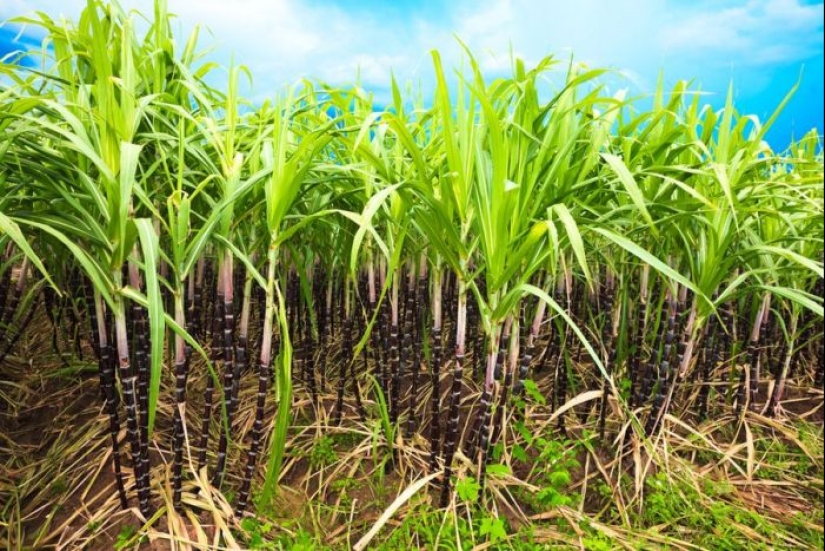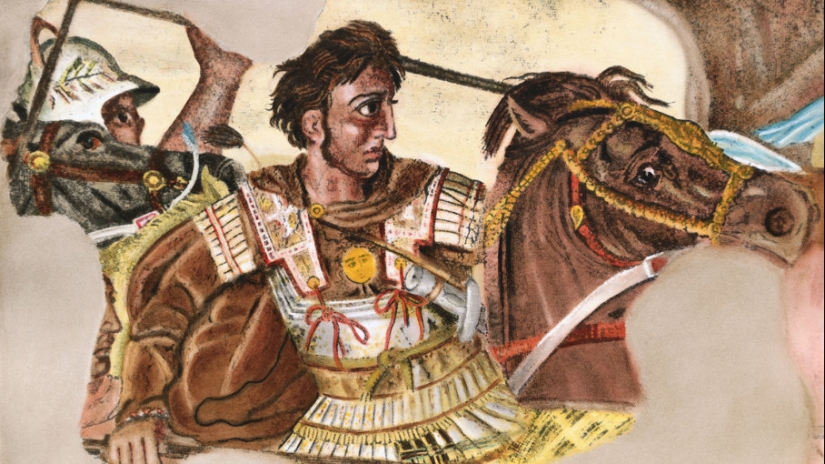The history of sugar, or How the "sweet life" of mankind began
Categories: Food and Drinks | History
By Pictolic https://pictolic.com/article/the-history-of-sugar-or-how-the-sweet-life-of-mankind-began.htmlAlthough today it is customary to harshly scold sugar, people have not yet learned to do without it. The history of mankind is inextricably linked with this ambiguous product, which heals, kills, helps to make discoveries and simply makes life sweeter. What do we know about the origin of sugar and its role in different eras?

It's no secret that sugar appeared thanks to the Saccharum offi cinarum plant. This beautiful name was invented by Carl Linnaeus himself, but people usually know it as sugar cane. It is a thermophilic herbaceous plant, related to such crops as sorghum and maize.

Sugar cane is repeatedly mentioned in ancient writings. It should be said that not all residents of warm countries got acquainted with the plant at the same time. The Koran does not mention the reed, but in the Old Testament, written much earlier, it already exists. Isaiah (43:24) and Jeremiah (6:20) mention the "sweet reed" and with a high probability it is Saccharum offi cinarum.
It is particularly worth clarifying that sugar cane did not grow in the Middle East. He was brought from afar, as evidenced by the verse from Jeremiah:
It is clear that this reed was highly valued by the Jews and came to their lands as a valuable gift. But if the plant was mentioned often, then most of the ancients did not know anything about sugar.
The exception was the Hindus. In the biographies of Gautama Buddha, both the reed itself and the finished sweet product from it are mentioned. Moreover, the Enlightened One himself did not approve of its use, considering it one of the signs of weakness of the spirit. Obviously, he also cared about the physical fitness of his followers.

It is believed that the Buddha was born 568 BC in India. This means that at that time in this part of Asia not only cultivated, but also knew how to process cane. The Pratimoksha or Buddhist Monastic Code lists foods that are considered "pakitya" for a healthy person, that is, excess.
Along with buffalo milk, butter and vegetable oil, meat, fish and cottage cheese, gur, a kind of cane sugar, was included in the extensive list. Most likely, these rules of nutrition were established by the Buddha himself, which means that he was aware of sugar cane and sugar made from it.
Even before our era, cane was grown everywhere in India. It is possible that there were other plants that supply people with sugar. In 325 BC, the troops of Alexander the Great entered India. One of the generals of the great conqueror, named Nearchus, wrote this:

Most likely, Alexander's commander got acquainted with sugar cane and sweet water, but did not see sugar. Around the time of the Macedonian Indian campaign, sugar cane appeared in Egypt. All this suggests that it was brought from the campaign by the Greeks. In the North of Africa, cane began to be grown in the delta of the Nile River, and very successfully. The Egyptians even sent a valuable product for export.
But India still retained the glory of the sweetest country for a long time. In 320 BC, as many as five types of sugar were known there. The most common were three: guda, khanda and sarkara. From the word khanda came the English candy (candy). As for sarkara, everything is obvious here, because it sounds almost like a modern "sugar".
By about 200 BC , sugar cane was already well known in The Celestial Empire. There is no mention of sugar or even sweet water in the sources of that time. Therefore, it can be assumed that the Chinese simply chewed the stems. There is evidence that the kingdom of Funan, located on the territory of present-day Cambodia, paid tribute to the Chinese emperor. Among the goods going to Beijing, there were also bundles of reeds.
Around 100 BC, sugar cane was already grown massively in China, however, only in the southern regions. By that time, this culture was already known in North Africa, the Middle East and the States of the Arabian Peninsula.

But the march around the world, sugar began no earlier than 600, when it began to be produced in Persia. It is difficult to say why the reed bypassed this empire and appeared there so late. It is possible that it is due to the arid climate. To grow the crop, it was necessary to create large-scale irrigation facilities.
In 262, the king of the Sassanid dynasty Shapur I built a dam on the Little Tigris River. It made it possible to irrigate vast desert areas, which turned into agricultural land. It was then that the first attempts of the Persians to grow sugar cane began.
The word sugar comes from the Sanskrit shakkara. This word could be used not only to a sweet substance, since it meant any product in granules in general. Many languages have consonant names: sakkar in Arabic, sheker in Turkish, zucchero in Italian, sucre in French and sugar in English.
But in India itself, sugar was most often called gur. The word means "ball" and it accurately reflects one of the technological processes of production. The finished sugar was extracted from the digester in the form of a large sticky lump of spherical shape.

In 627, the Byzantine Empire inflicted a crushing defeat on Persia. In the palace of the defeated King Khosrow II in Dastagerde, among the numerous trophies, sugar stocks were also captured. The Byzantines called it an "Indian delicacy" and immediately fell in love with it.
So sugar came to Europe in different ways, through Greek ports, as well as with Byzantine caravans of war booty. Later these facts were forgotten, and for many centuries it was believed that sugar was brought from India and China in the 13th century by Marco Polo.
In the 15th century, sugar cane crossed the Atlantic on the caravels of Christopher Columbus. The climate of the West Indies suited this culture and sugar cane plantations occupied huge areas in the Americas. A little later, the cane was brought to Australia from South Africa by the British.
It is worth saying that sugar was quite a harmless food product. Huge fortunes were made on it, they fought over it. Sugar provoked uprisings and became one of the reasons for the enslavement of millions on the Black continent.

He even promoted the migration of peoples and races. Because of him, 20 million Africans found themselves in North and South America against their will. By the will of sugar, Japanese and Chinese appeared on the Hawaiian Islands. He "helped" take tens of thousands of Oceania residents to the Australian mainland.
All this happened only because of the passion of some people for sweets, and others for profit. Now it is impossible to calculate how many millions of victims are on the account of the "white death". Therefore, sugar deserves to be treated with respect, like bread, and at the same time a little apprehensively.
Recent articles

Sometimes, when someone accidentally breaks a cup or plate, you can hear the phrase that it is "for luck". Sometimes at weddings, ...

Most American success stories are about how a person chose a goal and walked towards success despite obstacles. But there are also ...

It is impossible to imagine the New Year without citrus fruits, especially tangerines. And on other days it is difficult to refuse ...